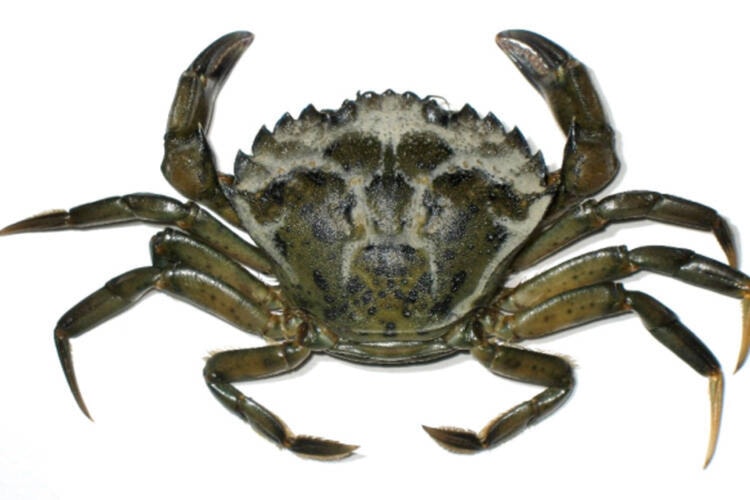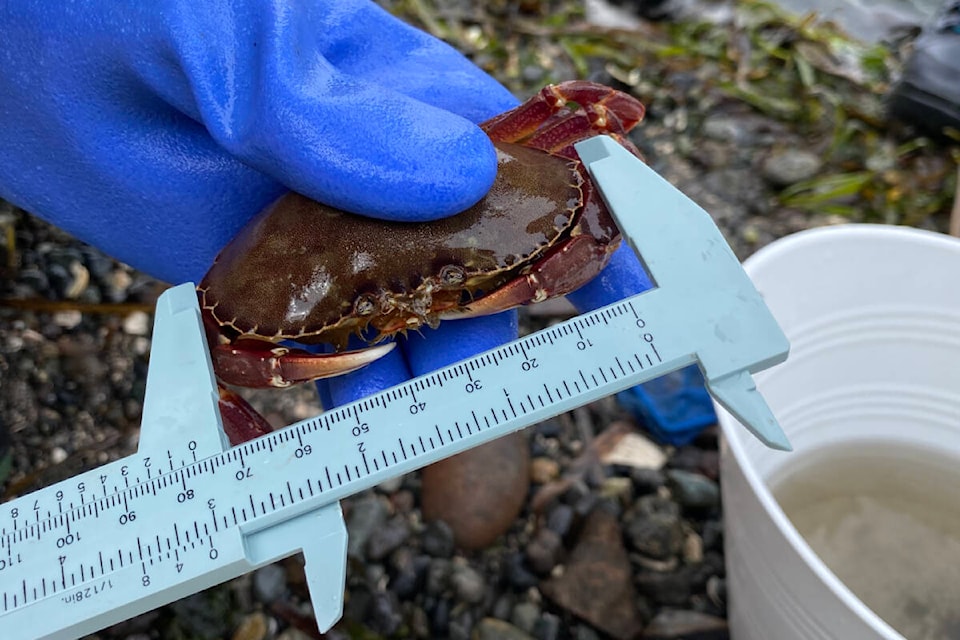A growing South Island water habitat restoration non-profit is joining the battle to nip the spread of invasive European green crabs.
Known as an aggressive and dominant predator with a voracious appetite, the European green crab is known to be in B.C. waters.
They’re present all the way up the west coast in a slow invasion underway for more than two decades according to Fisheries and Oceans Canada data.

First found on the east coast in 1951 in the waters off New Brunswick, they have expanded to many locations in the Atlantic. In west coast waters, the European green crab likely arrived in the late 1990s through larval drift, according to DFO. They were first reported on the U.S. side of the border in fall 2016; Now they’re found along the entire west coast of Vancouver Island.
Unfortunately, the invasive crab is highly resilient. It lives four to seven years, feasts on a wide variety of plants and animals and the females can release up to 185,000 eggs once or twice within a year. They’re known for destroying beds of shellfish, and feasting on native bivalves and small fish while beating out the local species for the grub.
RELATED: Extreme weather could help invasive green crab crawl along Vancouver Island, B.C. coast
Peninsula Streams and Shorelines recently finished training with the Port Alberni-based Coastal Restoration Society to take up arms against the small Salish Sea invaders.
The fight is an “all hands on deck” situation, says Chloe Kraemer who started as a biologist support technician with the society this spring. She’s among those set to embark on the society’s second summer of early detection monitoring – sampling once a month at two sites from June through September.
The monitoring program fits in perfectly with the Peninsula Streams and Shorelines Society’s goal of getting people out and interested in their local environment.
“We want people who live here to be connected to their ecosystems, especially in their backyard,” Kraemer said.
The two-day training was a fun, hands-on experience that entailed a day of setting traps, then 24 hours later, retrieving them to identify all the species captured. At the end, the team leads were established, trained and ready to roll out the second season of monitoring, while working on the details of where and when to sample.
They’ll likely monitor a Millstream Estuary site, a little further from where they monitored last year, and are on the hunt for a second site with similar characteristics – soft sediment, freshwater input, and lots of European green crab snacks such as small juvenile crabs and bivalves.
VIDEO: Invasive lizard population spreads across Vancouver Island
Residents can expect to see calls for volunteers to join the cause in the coming days, Kraemer said. They’re looking for someone who’s passionate, cares about the environment, is willing to learn and has a good attitude. But really, they’re looking for anyone who enjoys the shoreline to be on the lookout.
“You don’t have to be a part of these organizations to help with this,” she said. “We need these community stewards to help us.
“Invasive species in general are often spotted by walkers, fishers and other beachgoers.”
The European green crab can reach 10 centimetres in width, is usually green but can be red or yellow, and is distinguished by five distinct spines on the outer side of each eye.
Anyone who thinks they have discovered any aquatic invasive species can take photos, and note the exact location with GPS coordinates, the date and identifying features. That information can be reported by email to DFO.AISPacific-EAEPacifique.MPO@dfo-mpo.gc.ca.


